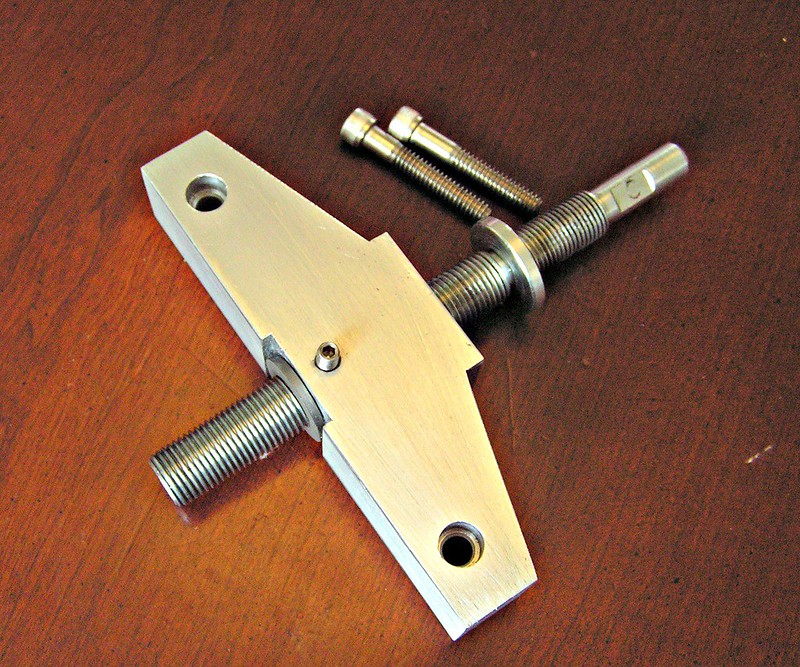Wildestcat
Well-known member
It has not been the greatest of mornings! Whilst using my Jet 10-20 to thin down a guitar top, on one pass it seemed to spuriously add about 0.5mm to the depth of cut. I had stopped the drum whilst making adjustments to the belt tracking, and on re-starting the cut had dramatically increased. OK, so I imagined I must have somehow moved the handwheel, and since there was plenty of meat left, I carried on and evened up the thickness OK. However after stopping the machine again for final thickness checks and a cuppa, I put the top back through for a final pass without changing any settings.
Well, the top is now wrecked.

This time I was sure I hadn't touched anything, so carefully checked the machine. No play in bearings, abrasive nice & tight on the drum, no bulges where the belt goes into the drum, and finally I ran the height adjustment up & down several times - couldn't find anything wrong ... so ...
I started to thin down another top set to ~4mm before jointing. All going well until I had to adjust the tracking again. Put a top half back through without touching anything else on the machine, only to think "that sounds like a heavy cut ..." It was about 1mm, taking the half down below 3mm, enough to mean I can now only use that set for ukes.
Now I know about the height screw/nut failure problem that is apparently quite common on these machines, but I always imagined it would be a catastrophic event - it would simply fail, and the screw would no longer raise or lower the drum, which would presumably have dropped down in the process.
My drum still winds up and down OK though!
Is it the case that the failure mode is initially intermittent depth of cut increments?
I think I have to assume the worst and contact the good Mr Timms about a replacement.
One more question - does the 16-32 suffer from similar problems or is that a more robust machine? I don't like having to double feed guitar tops at the best of times, so a 16-32 might make some sense if I can find room (and some cash).
Well, the top is now wrecked.

This time I was sure I hadn't touched anything, so carefully checked the machine. No play in bearings, abrasive nice & tight on the drum, no bulges where the belt goes into the drum, and finally I ran the height adjustment up & down several times - couldn't find anything wrong ... so ...
I started to thin down another top set to ~4mm before jointing. All going well until I had to adjust the tracking again. Put a top half back through without touching anything else on the machine, only to think "that sounds like a heavy cut ..." It was about 1mm, taking the half down below 3mm, enough to mean I can now only use that set for ukes.
Now I know about the height screw/nut failure problem that is apparently quite common on these machines, but I always imagined it would be a catastrophic event - it would simply fail, and the screw would no longer raise or lower the drum, which would presumably have dropped down in the process.
My drum still winds up and down OK though!
Is it the case that the failure mode is initially intermittent depth of cut increments?
I think I have to assume the worst and contact the good Mr Timms about a replacement.
One more question - does the 16-32 suffer from similar problems or is that a more robust machine? I don't like having to double feed guitar tops at the best of times, so a 16-32 might make some sense if I can find room (and some cash).

